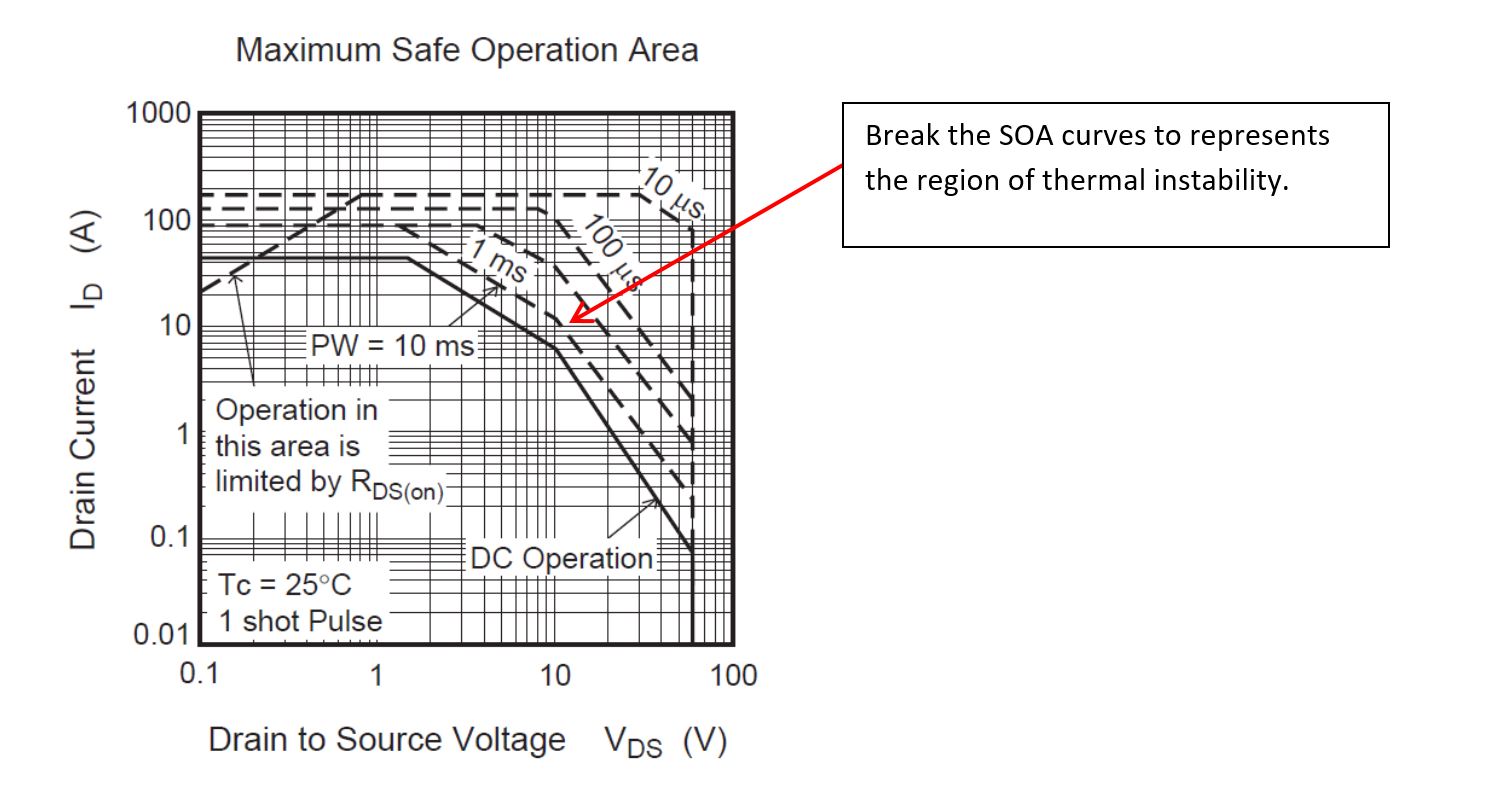Hi,
Here are a few words and pictures of my understanding of the SOA issues with MOSFETs.
1) Older MOSFETs with low Gm are more robust.
Have to be careful that the MOSFET has not been redesigned, die shrink, on a modern process.
Older planar MOSFETs are the best.
2) MOSFETs with high gate threshold voltage are more robust
3) MOSFETs that have been optimized for switching, low gate charge perform badly.
The fundamental reason is that the for a given gate source voltage the drain current will increase with temperature. If the device is not uniform then a small area of the device will have local heating and there will be thermal runaway from the hotspot leading to catastrophic damage.

There will be an SOA curve on the datasheet.
If it looks like this:

It includes the are of thermal instability, indicated by the breakpoints on the lines. This is fairly reliable.
If the SOA curve looks like this:

This datasheet was generated before the interest in thermal instability or the part does not suffer from thermal instability. This is tough to decide and the parts have to be tested.
I would be very cautious of the datasheets so no thermal instability. I would not assume that company S is better than company I.
Testing
I have done some testing to verify SOA curves on a few MOSFETs. Here are some of the results:


 Testing the IRFP250
Testing the IRFP250I have not tested the IRFP250 (N). It would be interesting to see how it performed at 40W and 150V.
(May be if I get a minute or two and I want sacrifice a few MOSFETs)
My gut tells me that it should perform reasonably well. It is an older part, it has not really being optimized for switching. I don't know if has been 'improved' by die shrinks which would reduce its reliability in the linear region.
Regards,
Jay_Diddy_B